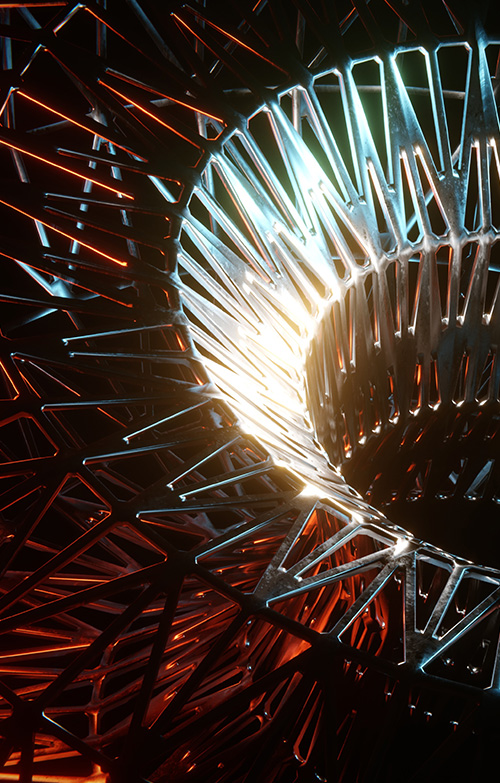Hector Fellow since 2008
Prof. Dr. Martin WegenerProf. Dr. Martin Wegener
Institute of Applied Physics, Karlsruhe Institute of Technology
Martin Wegener is Professor at the Institute of Applied Physics at the Karlsruhe Institute of Technology (KIT), Scientific Director of the Institute of Nanotechnology at the KIT and speaker of the Cluster of Excellence "3D Matter Made to Order" at KIT and the University of Heidelberg.
His research focuses on the high-precision 3D additive manufacturing of artificial materials, so-called metamaterials. Tailoring their "meta atoms" on the nanometer or micrometer scale makes it possible to achieve completely new characteristics. For example, his team succeeded in realizing camouflage caps in a wide variety of physical systems.
Martin Wegener received, among others, the Leibniz Prize of the German Research Foundation (DFG), the State Research Award of Baden-Wuerttemberg, the Carl Zeiss Research Award and the Descartes Prize of the European Union. Besides, he is a member of the German National Academy of Sciences (Leopoldina), the German National Academy of Science and Engineering (acatech) and a fellow of the Optical Society of America. He is the initiator, co-founder and shareholder of Nanoscribe GmbH, a spin-off company that brings 3D laser lithography to the market.
Cluster of Excellence 3DMM2O
3D Printing on the Micrometer and Nanometer Scale
Prof. Wegener's research focus is on laser-based 3D printing, more specifically 3D printing at the micrometer and nanometer scale. In addition, Prof. Wegener researches metamaterials and their fabrication by 3D printing.
Nanotechnology, Optics & Photonics
Research fields
Details about current research.
Tailored distributions of artificial materials called metamaterials allow for designing and fabricating invisibility cloaks in optics and counterparts thereof in other areas of physics. For example, cloaking can be used for making metal contact grids on solar cells invisible, thereby increasing the energy conversion efficiency by as much as 10% [1]. In the diffusive regime of light propagation, invisibility cloaking is also possible [2] and can, for example, be applied for homogenizing the light emission from large-area organic light-emitting diodes (OLED). The latter were inspired by thermal cloaks [3].
In a project of the Hector Fellow Academy jointly conducted with Hector Fellow Peter Gumbsch, mechanical metamaterials are being investigated. This has led to static mechanical cloaks [4,5] and to modified pentamode metamaterials [6] that might enable cloaks for mechanical waves in the future. Furthermore, tailored buckling nonlinear mechanical metamaterials can be designed that allow for large specific energy absorption – while being reusable. Metamaterials with tailored thermal expansion are another area of current research.
As another example for optical metamaterial, three-dimensional gold-helix architectures can be used as broadband circular polarizers [7]. Advanced versions thereof [8] take advantage of stimulated emission depletion (STED) laser lithography beyond the Abbe diffraction limit [9].
A more complete list of publications of the Wegener group can be found at http://www.aph.kit.edu/wegener/77.php
References
[3] Experiments on transformation thermodynamics: Molding the flow of heat, R. Schittny, M. Kadic, S. Guenneau, and M. Wegener, Phys. Rev. Lett. 110, 195901 (2013)
[4] An elasto-mechanical unfeelability cloak made of pentamode metamaterials, T. Bückmann, M. Thiel, M. Kadic, R. Schittny, and M. Wegener, Nature Commun. 5, 4130 (2014)
[5] Cloak design by direct lattice transformation, T. Bückmann, M. Kadic, R. Schittny, and M. Wegener, Proc. Natl. Acad. Sci. USA 112, 4930 (2015)
[6] Pentamode metamaterials with independently tailored bulk modulus and mass density, M. Kadic, T. Bückmann, R. Schittny, P. Gumbsch, and M. Wegener, Phys. Rev. Appl. 2, 054007 (2014)
[7] Gold helix photonic metamaterial as broadband circular polarizer, J.K. Gansel, M. Thiel, M.S. Rill, M. Decker, K. Bade, V. Saile, G. von Freymann, S. Linden, and M. Wegener, Science 325, 1513 (2009)
[8] Gold triple-helix mid-infrared metamaterial by STED-inspired laser lithography, J. Kaschke and M. Wegener, Opt. Lett. 40, 3986 (2015)
[9] Three-dimensional optical laser lithography beyond the diffraction limit, J. Fischer and M. Wegener, Laser Phot. Rev. 7, 22 (2013)




